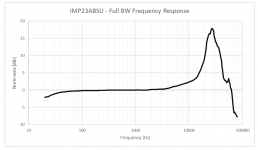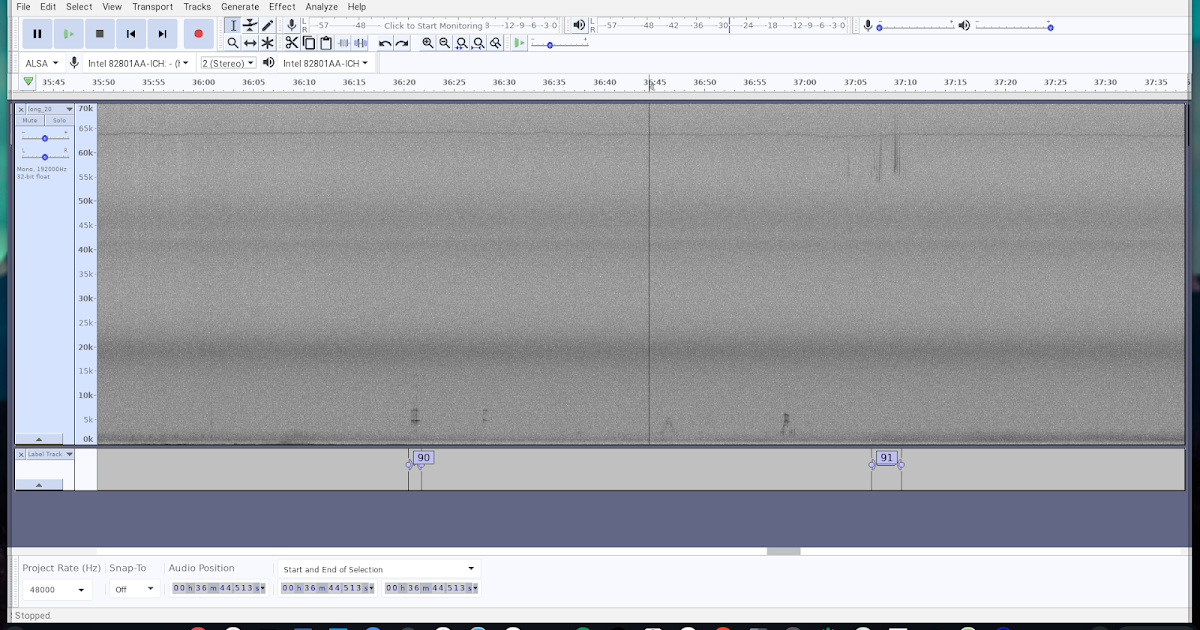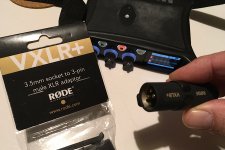I have tried to record bats once using a good but non specifically ultrasonic capable recorder and, to my surprise, it worked pretty well at close range. Bats are loud!
In my case I used a Marantz PMD661MK2 with its builtin microphones.
Anyway, a good professional recorder such as a Sound Devices MixPre 3 II or the MixPre 6 or 10 (both original an series II) that can sample at 192 KHz will be able to record 90 KHz of spectrum as long as you connect a proper microphone.
And even good condenser microphones can record ultrasonic frequencies although with some attenuation, like the humble builtin electrets in my Marantz.
I would be interested to know what were the frequencies you were successful with using the Marantz? I occasionally see a series of ticks/clicks on NocMig recording at approximately 18,500Khz, which I assume is a bat, although it seems a little low in frequency. I am recording at 96KHz and have sonograms displayed across the full range, so up to 48,000KHz, but never see a peep about the mic threshold of 20,000KHz. Perhaps there would be a response if a bat was very close - as you say, I understand that bats are in fact incredibly loud - even a very weak response from my mic may therefore generate some kind of signal.
It is a bit frustrating that most companies are silent on frequency response of bat equipment, so it is unclear if mics work well across full spectrum.
I have found some further date on the Audiomoth, but it shows a fairly flat response for the mic between 1 and 10KHz, without any data beyond that. I am a bit of a layman, but from my interpretation of sensitivity and signal to noise ratio data for the mic, it does not look great for good quality acoustic recordings - but then I presume the AudioMoth's purpose is passive monitoring of soundscapes for conservation studies. The performance conclusion seems to be backed up by on the following link
Equipment Comparison February 2020 – nocmig, where there is mention that some NocMig sounds were hard to detect in the Audiomoth recordings and that noise (hiss) in an issue on full sensitivity.
A paper on the web
Ultrasound behavior and guidelines of analog MEMS microphone IMP23ABSU - Application note (st.com), has a frequency response for a MEMS mic - both the AudioMoth and Pettersson u256 or 386 use MEMS mics, but I think different models. If this frequency response if typical for all MEMS type mics, then they are much more sensitive between 15,000KHz and 50,000KHz, with a distinct peak in the frequency response. The acoustic range is flat (as per the other data I found on the AudioMoth), so Audio recordings should not be coloured.
I am not sure how you would set recording levels for full spectrum as the frequency response diagram suggests that if you set a level appropriate for birds, a bat recording at 30,000KHz would probably be clipped (or perhaps the device limiters triggered) - the frequency response below indicates the signal would 18dB (or 64 x louder - and as stated bast calls are loud in any case!). I would imagine from the data that a bespoke bat recorder may have a very low gain range.
This could mean that bird sounds then are indiscernible or very weak in recordings.
I suppose a possible solution to recording bats and birds at the same time, would be to use a recorder with capability to record 192KHz or better, and then to have separate acoustic and ultrasonic mics, to record birds on the left channel and bats on the right. Gain could then be set for each channel accordingly. There don't seem to be many ultrasonic mics with standard xlr connections, and the one I found made me fall off my perch when I saw the price! So, I still think it is probably more economic to use two separate passive recorders - one for bats and one for birds.










